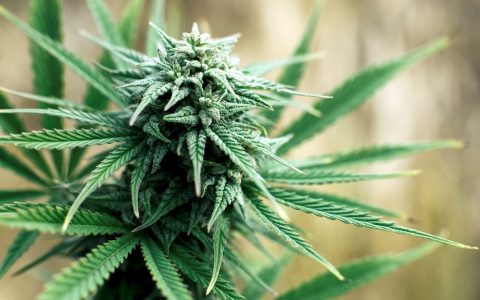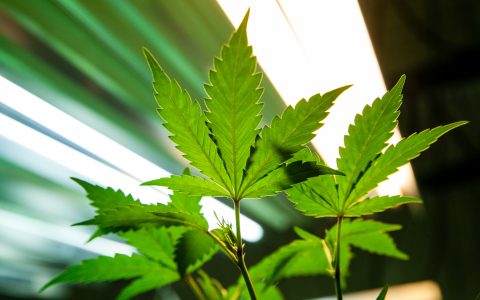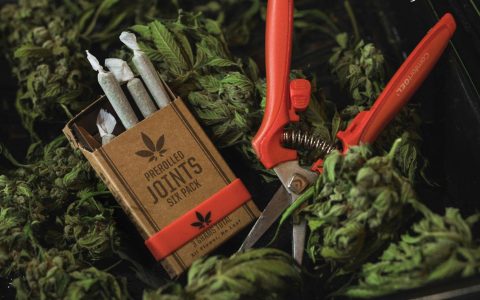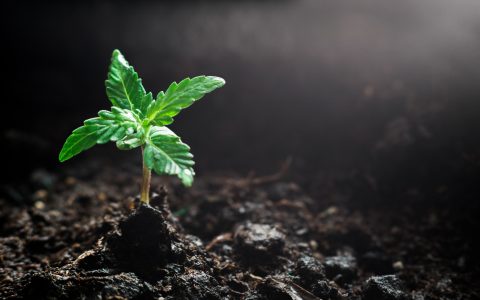Cannabis is a multibillion dollar industry in California, but travel through any of the grand stretches of agricultural land that line the state’s highways and chances are you won’t glimpse a single outdoor cannabis crop.
Only 12 municipalities in the state allow for outdoor cultivated cannabis. Instead, most cannabis is grown indoors, under high-intensity industrial lighting, which comes with a serious carbon footprint. The few outdoor operations that do exist face expensive regulatory fees and high taxes compared to indoor grows.
According to a 2011 article in the Journal of Energy Policy, the electricity used in indoor cannabis operations adds up to 1% of the nation’s power, equivalent to the amount needed to power 2 million average homes in the US. Additionally, the high-intensity bulbs used in most operations contain about 30mg of mercury each—the EPA considers mercury emissions to be among the most serious air quality threats to human health.
With indoor grows, there are also issues of water use (especially in a state that just came out of a long drought) and potential water pollution from water waste produced by large industrial grows that often use nitrate-rich fertilizers.
Meanwhile, sustainable outdoor operations rely solely on sunlight and rainwater, using little-to-no irrigation, and employ organic farming practices that don’t use polluting fertilizers.
With large corporations like Marlboro in the cannabis industry, small, sustainable farms are likely to face even more steep competition in coming years.
David Bronner, CEO, Dr. Bronners
“What we can see with cannabis is kind of the same thing that’s happening with so many other commodity crops, where huge industrial agricultural organizations move in and displace small family farm ecosystems that are planned in a much better way,” says David Bronner, CEO of the popular sustainable soap brand Dr. Bronner’s. “We need to shift away from industrial, chemical, and energy-intensive agricultural methods that diminish soil and the surrounding ecosystems.”
Dr. Bronner’s has contributed $5 million to the cannabis legalization movement and to the scientific study of cannabis (and of psychedelics, by way of the MAPS (Multidisciplinary Association of Psychedelic Studies). The company also plans to donate $2 million more throughout the 2020 election cycle, Bronner said.
Why Is Indoor the Go-To Growing Model?
How did a grow method with a serious carbon footprint become the standard in California’s cannabis industry?
According to Kristin Nevedal, cannabis industry pioneer and founder of the International Cannabis Farmers Association (ICFA), the popularity of indoor grows has to do with leftover symptoms of prohibition. Before adult-use legalization, cannabis grows had to stay hidden and indoor operations were the easy-to-follow, cookie-cutter model already in place. This, combined with a lingering public stigma surrounding the plant—like people worried about the smell of outdoor crops—led to indoor becoming the standard, she says.
Nevedal has been working for farmers rights, education, and sustainability in the cannabis industry for more than a decade, and says the reason outdoor cultivators in the state face so many regulatory hurdles today is likely due to the environmental destruction caused by large trespass grows during prohibition.
Those grows wreaked serious environmental havoc—illegal and toxic chemical pesticides were used, water systems were dammed and polluted with synthetic fertilizers, forests were cleared, and waste was left behind.
But today’s regulations don’t account for most legal outdoor cannabis operations, which by and large are small family homesteads, many of which have been pioneers in organic, sustainable farming.
“From a cannabis industry perspective, if we aren’t going to really start paying attention to putting this plant back into the ground, we aren’t going to be able to manage our environmental impacts as an industry,” she said. “Not just in CA, but on a global level, we can’t necessarily afford the greenhouse gas associated with cultivation under high intensity discharge lighting in a yearlong manner when, really, this plant can go in the ground and be farmed using natural sunlight.”
The Sun and Earth Certification
Michael Steinmetz, CEO of Flow Kana—California’s largest distributor of sungrown organic cannabis from small craft farmers—says he founded the company based on the core belief that “cannabis can be a catalyst for social, economic, and environmental change. Cannabis is an agricultural crop, and agriculture—specifically the practices of mass industrial agriculture (Big Ag)—is one of the greatest perpetrators of climate change,” he said.
Michael Steinmetz, CEO, Flow Kana
He and his company have been working to make consumers aware of the burgeoning craft cannabis industry, and the potential it has to mitigate cannabis’ environmental costs.
“Sungrown cannabis, cultivated on a small farm that uses beyond organic practices, yields a high-quality, craft product,” he says. “These stewards of the land have spent their lives balancing a unique and harmonious relationship between the farm, the genetics and the terroir. The result is an unparalleled product that simply cannot be found anywhere else. Further, by being a consumer-activist that choses a sungrown product, one can help combat climate change and the threat of Big Ag on this community.”
One of the major hurdles to sustainable cannabis farming practices on a wide scale is the fact that cannabis farms aren’t yet federally legal, so they can’t apply for organic or other certifications through the US Department of Agriculture (USDA).
To address this issue, Flow Kanna partnered with Dr. Bronner’s and a coalition of companies and organizations to develop the Sun and Earth Standard for cannabis growing operations. The certification holds farmers accountable to organic, regenerative practices as well as standards of human empowerment and community engagement.
“The goal here is basically to create the consumer basic standard for the really high level regenerative, organic cultivation of cannabis,” said David Bronner.
David Bronner also recently launched a nonprofit cannabis brand platform called Brother David, which will give 100% of its profits to increase awareness of the Sun and Earth certification and sustainable cannabis practices.
Brother David will use its profits to cover the actual costs of farmer certification, and fund organizations like Kirstin Nevedal’s ICFA “and all their really rad advocacy on behalf of small farmers,” Bronner said, as well as anti-prohibition advocacy.
Bronner says it’s time to transition our farming landscapes—which he notes now makes up 40% of the earth’s surface—to reflect nature.
“If you look at a wild ecosystem, there is no external chemical input. It’s all completely self-regenerating,” he said. “We want to help transition cannabis farming, generally, to a regenerative, sustainable practice.”
















